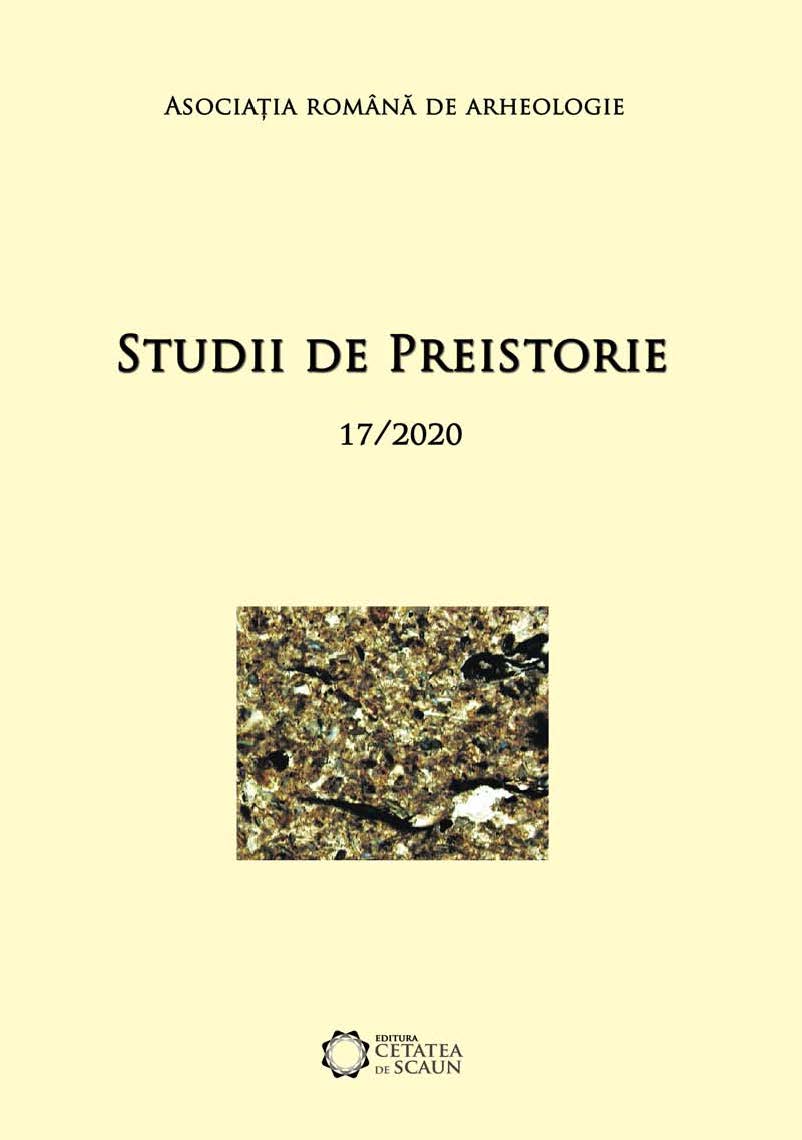Analiza micromorfologică a secvenței stratigrafice inferioare din situl Peștera „Craniilor” (sat Cheia, jud. Constanța)
Micromorphological analysis of the lower stratigraphic sequence from the ”Craniilor” Cave site (Cheia village, Contanța County)
Author(s): Constantin Haită, Valentina Voinea, Bartlomiej Sz. SzmoniewskiSubject(s): History, Archaeology
Published by: Editura Cetatea de Scaun
Keywords: Eneolihtic;Iron Age;housing structures;occupation;micromorphology;
Summary/Abstract: This study considered a number of eight block samples, taken on the southern profile of section S II, investigated in front of the cave entrance. The micromorphological analysis aimed to identify the human activities corresponding to the levels of Eneolithic and Iron Age occupations, but also to characterize the units of natural accumulation, especially the environmental conditions associated with them. The first Eneolithic level corresponds, most probably, to activities of short duration and low intensity, the occupation being concentrated, most probably, inside the cave. The unit of accumulation of yellowish silt, of loess type, may correspond to an abandon phase separating the two levels of Eneolithic occupation. The observed levels of floor and the plasterings are composed of loess type silty sediments and have different degrees of combustion, under oxidizing or reducing conditions, and include straw like vegetal fragments and the associated characteristic channel voids. The levels of occupation corresponding to this housing structures are represented by accumulations of ashes and fine charcoals, containing rare fragments of shells and fish bones. There were observed few fine units, with thickness of few mm, finely stratified, containing frequent phytolites, which could come from the in situ accumulation of the residues resulting from the processing of cereals. Also, they are associated with frequent levels of water reshuffling of fine sediments, during precipitation, as well as characteristic fissuration for the humid environment. The housing structures levels attributed to the Iron Age occupation contain levels of compact ash with frequent charcoal and rare bones and shells. Important and frequent calcite deposition on cracks was observed. The active sedimentation and the rapid burial allowed the preservation in very good conditions of these levels of occupation, attributed to built structures. The levels of destruction are not noticeable or have very small thickness, which may be the result of the arranging of the surface by removing them. The natural accumulation that separates them has the characteristics of an organic paleosoil level, with evolution in humid conditions.
Journal: Studii de Preistorie
- Issue Year: 2020
- Issue No: 17
- Page Range: 7-19
- Page Count: 13
- Language: Romanian

